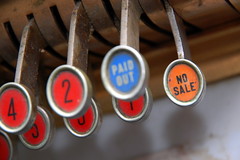Have you made these common email newsletter mistakes?
Here’s how it usually works.
A commercial photographer commented on Bob Bly’s blog last week complaining that email marketing has been destroyed by spammers. That anyone who signed up for one would invariably get spammed.
Another reader said she’d signed up for an email newsletter with the offer of a free consultation, but the sender never followed up.
They’ve both been the victims of poor email marketing.
What’s really wrong?
The problem isn’t really the email newsletter itself (that’s just the tool). It’s the way people are using (or abusing) it. It’s like trying to break an egg with a hammer. It will work, sort of, but it will make a horrible mess.
If you email without permission, build your newsletter the wrong way, or abuse the permission you received, your readers will opt out, ignore your emails, or even report you as a spammer.
Trust is essential
However, if you create a real relationship and they trust you, they will be eager to know what you have to say.
Say, for example, our photographer saw a newsletter from a digital photography software company. Instead of selling software directly, it had tips on how to use the software, where to get the best prices on equipment, and how to earn more money with fewer clients?
What if that newsletter also offered regular, free, useful advice, without being annoying?
Or, what if subscribing got him access to exclusive ebooks or discounts?
How about if he got those things before they were released to the general public?
The problem with the free consultation offer wasn’t the offer itself, it’s that it was never followed up. That’s not a good way to earn trust, and it also seems odd. Why go through the trouble of making a promise you have no intention of keeping? That won’t earn you trust, and it won’t get you new clients either. That’s not a good way to run a marketing campaign, regardless of what medium was used to deliver it.
If you want to break an egg, skip the hammer. Crack it against a cutting board instead. It’s more effective, and a lot less messy.
Image via art-core




